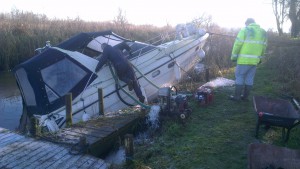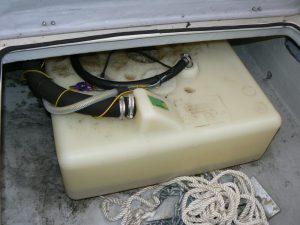Water gets in to fuel tanks in many different ways, through access ports and filler caps with faulty/damaged seals, tank vent breathers and from external sources such as re-fuelling bulk tanks and containers and Such as above – bad parking
Boat owners do not use their boats in the same way as they use their cars. Many boats are laid up for long periods particularly through the winter months. One of the main causes of fuel related issues is water contamination.
Water contamination is the starting point for bacterial growth, commonly known as ‘diesel bug’ and once in the system it can take some extensive and sometimes expensive work to get rid of it.
Of all the users of diesel fuel the operators of boats are the most likely to encounter problems with water contamination, fungus and bacteria for the following reasons:-
- Boats operate in a wet environment and it is not always possible to stop water seeping into fuel tanks.
- The fuel tanks on boats are designed to fit into restricted or unusually shaped areas to make the best possible use of available space. This can mean that they can be difficult to drain and often have areas where free water can collect and sit undisturbed.
- The fuel tanks contain baffles to stop the fuel sloshing about. The baffles can trap free water in small pockets.
- In warmer climates boats operate in areas with high humidity. Water in the air enters the boat tanks through the breather and condenses inside the tanks.
Where free water is present it will provide a site for fungus and bacteria to grow. Often the fungus or bacteria will develop for a long time without causing any problems until one day they become disturbed and stirred up into the fuel. This will be noticed when filters start blocking with a black slime which is the dead matter from the fungus and bacteria. The fungus can be stirred up by:-
- Vigorous movement due to re-fuelling, waves, rough sea or a storm, etc.
- The fungus population reaches a size at which it grows and spreads into the rest of the fuel.
- The natural life cycle of the fungus reaches a point at which dieback occurs and dead matter floats in the fuel.
- The fungal activity reaches a point at which natural surfactants produced by the fungus cause water and dirt to be suspended in the fuel and the fuel becomes hazy.
PREVENTION:
On land the normal prevention of fungal problems is to regularly drain any water in which the fungus can grow. This may not be possible in most boats because the fuel tank shape does not provide a common draining point for all water pockets. An effective method of removing free water and preventing any build-up of water is to insert an Aqua-Zorb cell in to the tank. These cells will absorb the water and are easily inserted through the filler cap and removed the same way. Aqua-Zorb cells are available in a large range of sizes and are suitable for small tanks and for all sizes of bulk storage tanks.
To prevent water getting in through the tank breather then consider fitting a Des-Case Desiccant Breather, these absorb moisture from the air as it is drawn in to the tank and also absorb moisture when air is expelled from the tank.
Consider regular treatment with a biocide or fuel treatment. The biocide should be one that can be added to the fuel that kills the fungus and stops it growing in the water. An example of effective biocides is Marine 16.
 All products are available from FA-ST Filtration Analysis Services Technology Ltd Tel: 01246268900 or e-mail [email protected] or visit www.fa-st.co.uk for more details or buy on line at www.oilsampling.co.uk
All products are available from FA-ST Filtration Analysis Services Technology Ltd Tel: 01246268900 or e-mail [email protected] or visit www.fa-st.co.uk for more details or buy on line at www.oilsampling.co.uk
FA-ST Ltd is actively looking for more distributors throughout the UK, Europe & Worldwide for their products and services.
For more information contact European Marine Services Ltd. Marine Surveyors & Consultants
EMS also undertake Boat Safety Inspections
Tel : 01603 327 123 www.europeanmarinesurveys.com








